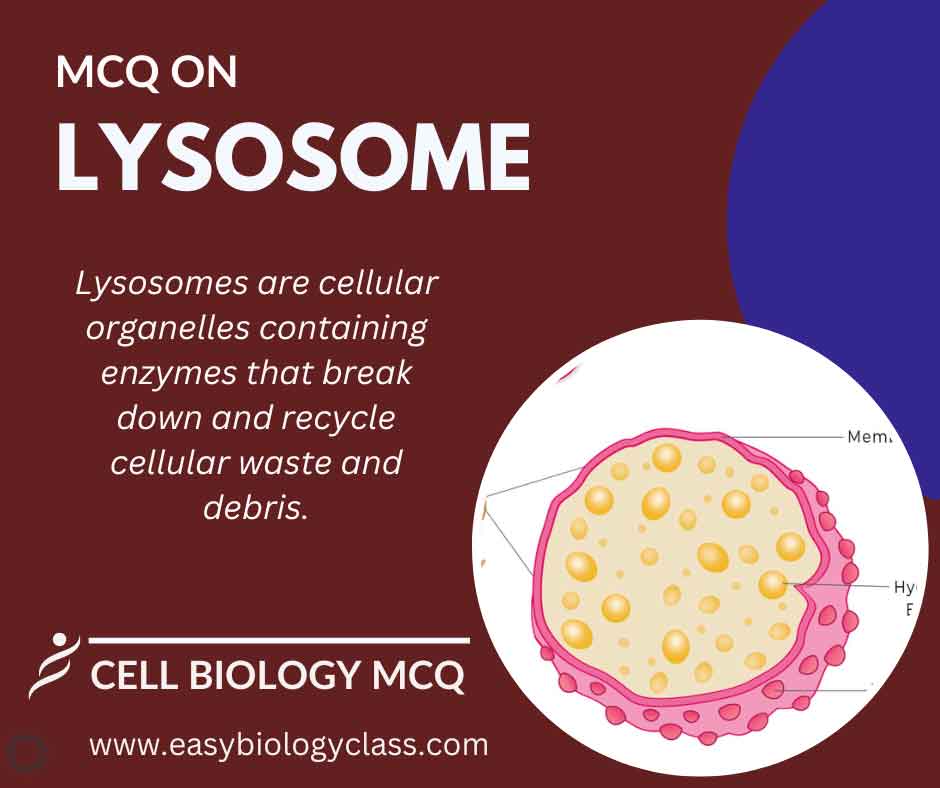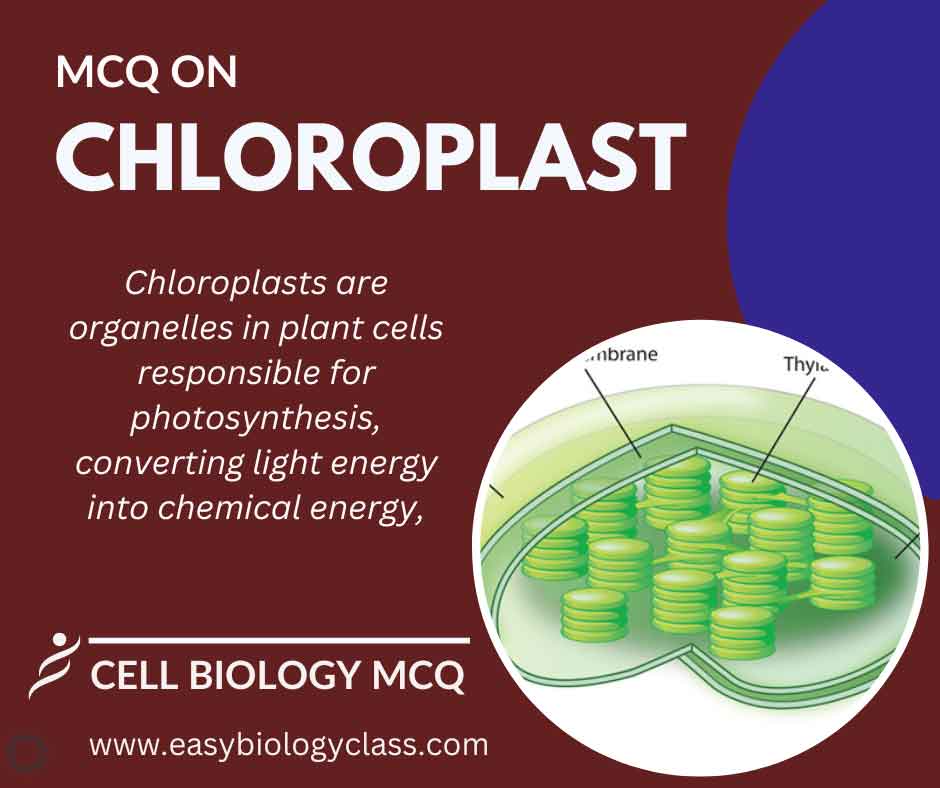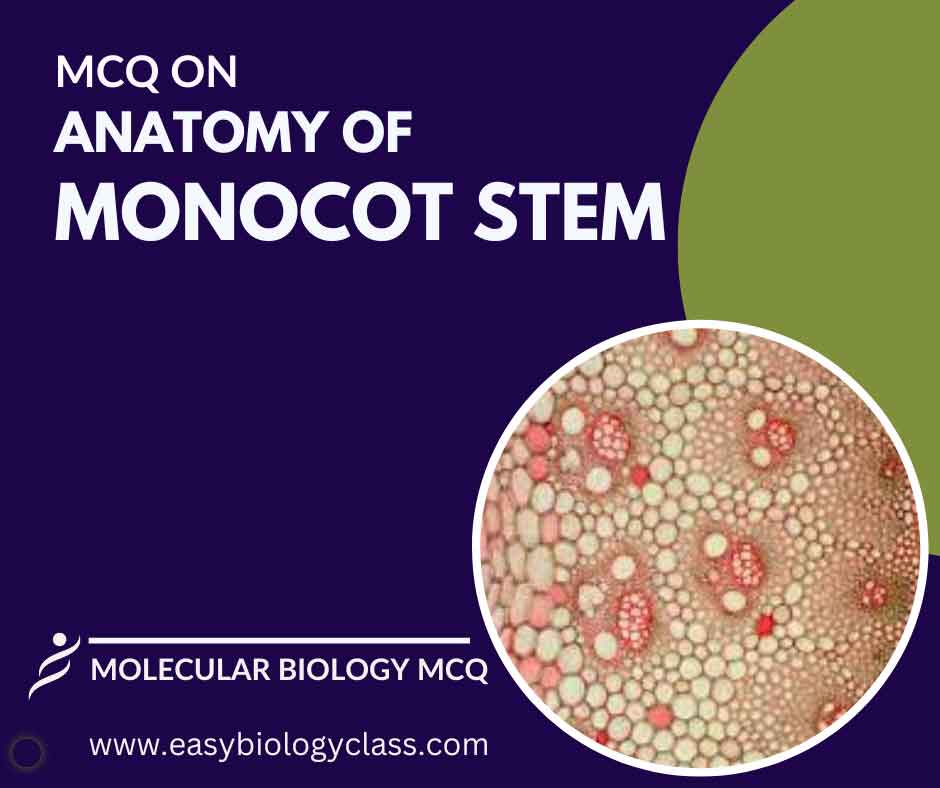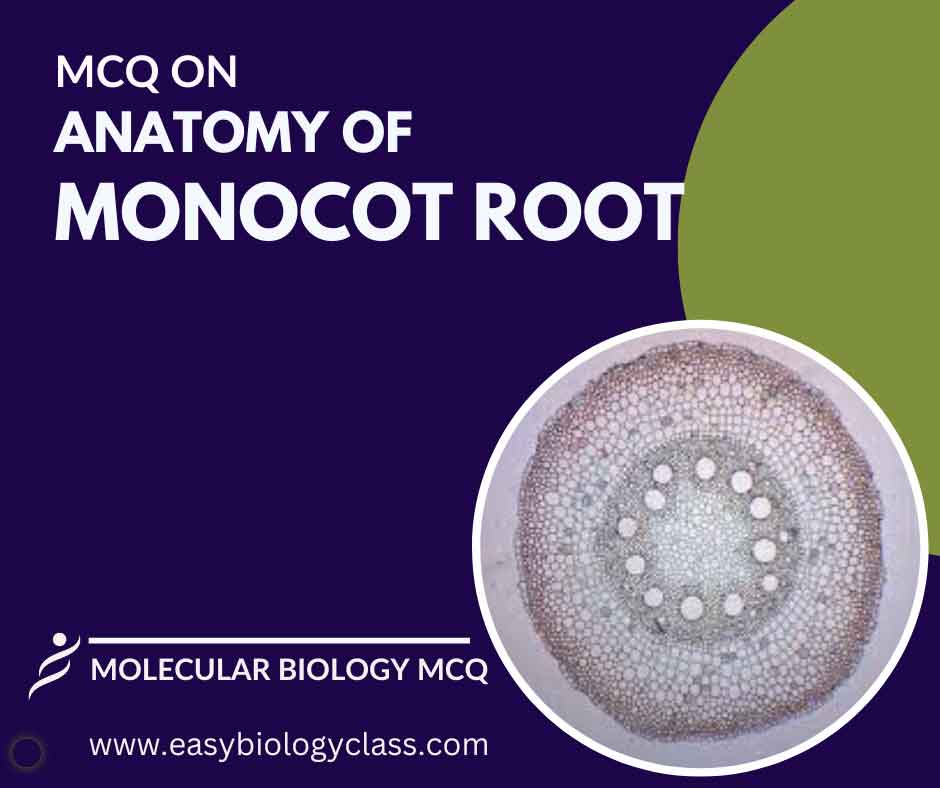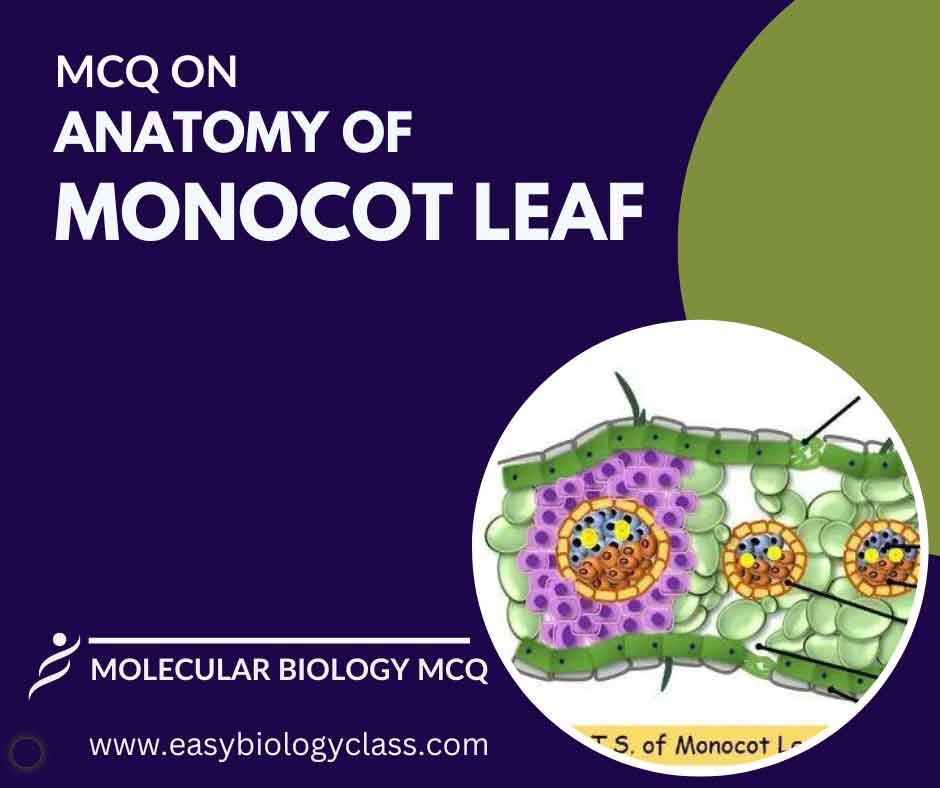Lysosomes are cellular structures filled with enzymes that digest and recycle cellular waste, damaged organelles, and foreign substances. They play a crucial role in maintaining cellular health by breaking down and recycling materials, contributing to overall cellular homeostasis. This is an MCQ on Lysosomes – Structure and Functions. | Cell […]
Continue ReadingMCQ on Chloroplast Structure and Functions
Chloroplasts are essential plant cell organelles containing chlorophyll, facilitating photosynthesis by capturing light energy and converting it into chemical energy. This process produces glucose and oxygen, supporting plant growth while contributing to the Earth’s oxygen. This is an MCQ on Chloroplast Structure and Functions. | Cell and Molecular Biology Notes […]
Continue ReadingMCQ on Anatomy of Monocot Stem
A monocot stem consists of epidermis with stomata, a scattered arrangement of vascular bundles containing xylem and phloem, and ground tissue. The stem lacks secondary growth due to the absence of a vascular cambium. A cuticle covers the epidermis. This is an MCQ on Anatomy of Monocot Stem with Answer […]
Continue ReadingMCQ on Anatomy of Monocot Root
A monocot root comprises an epidermis with root hairs, a cortex for storage, and an endodermis with a Casparian strip. The vascular cylinder contains xylem and phloem arranged in a ring. Root cap protects the growing tip, aiding in soil penetration. This is an MCQ on Anatomy of Monocot Root. […]
Continue ReadingMCQ on Anatomy of Monocot Leaf
A monocot leaf has a single layer of epidermis with stomata for gas exchange. Vascular bundles are scattered throughout the ground tissue, lacking a distinct arrangement. The mesophyll contains parenchyma cells for photosynthesis. A waxy cuticle covers the leaf surface. This is an MCQ on Anatomy of Monocot Leaf with […]
Continue Reading
